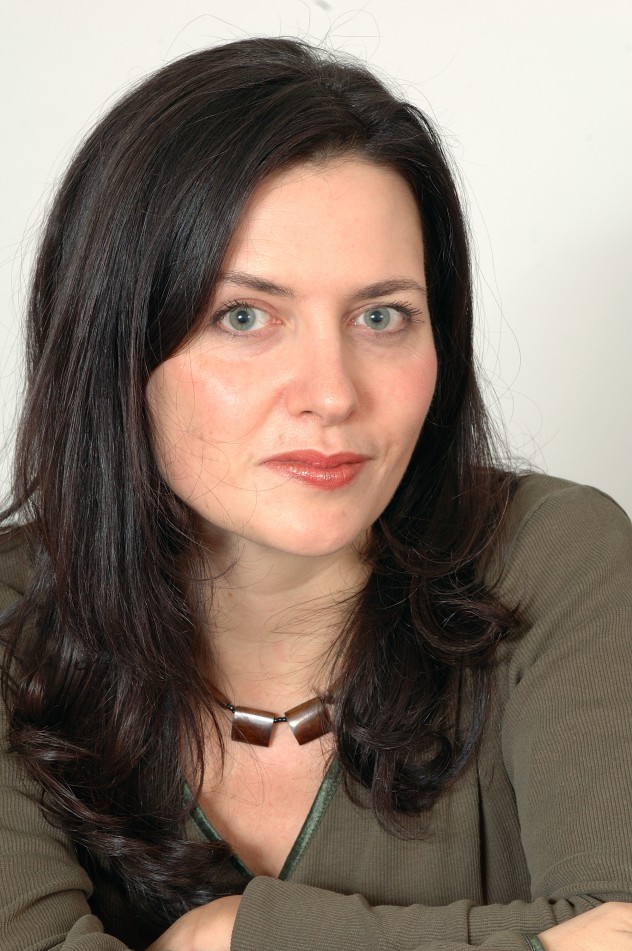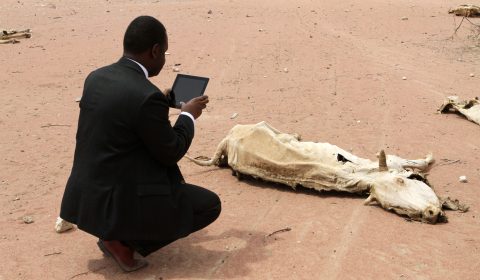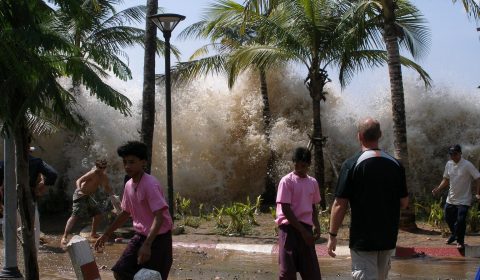
Disaster coverage is changing rapidly with social media and user-generated content (UGC). Dr Glenda Cooper’s research focuses on these developments and what they mean for disasters and humanitarian reporting.
By Mickey Carroll and Jon Eilenberg
Tweets, mobile phone pictures and videos have altered the way humanitarian disasters are covered in the media. This development can broaden the scope of humanitarian reporting and allow more voices and experiences in the coverage.
However, it also raises important ethical questions about how journalists treat the creators of UGC and which stories get told. As a part of her research on the role of UGC in disaster reporting, Dr Glenda Cooper has interviewed more than 100 creators, journalists and aid agency workers in order to analyse changing reality of humanitarian reporting.
We all react to dramatic pictures
Most observers would agree that the mainstream media tend to focus on rapid onset rather than slow chronic disasters. When UGC first started to make its presence felt, the hope therefore was that it would to change humanitarian reporting for the better by allowing people on the ground to tell their own stories.
However, Dr Cooper found this early optimism to be misplaced, as it quickly turned out that the UGC used by mainstream media continued to favour drama and sensation, such as amateur video of a gigantic wave or buildings falling. “The problem is, we’re all guilty of reacting to these very dramatic pictures,” she says. “Social media hasn’t helped. What do we all share on social media? It is the pictures of the tsunami or the earthquake. You can’t take pictures of a famine in the same way.”

Journalists as trusted intermediaries
This does not mean, however, that UGC and social media has not changed humanitarian reporting. Journalists often use such content when they aren’t able to get to a scene immediately after a disaster. Thereby, the journalists act as trusted intermediaries, or gatekeepers, between the barrage of information on social media and the audience. Furthermore, there has been a significant shift in how traditional journalists and citizen journalists interact.
“We talk about citizen journalists taking on the role of the traditional journalist but there is a two-way process here,” says Dr Cooper. “Citizen journalists try and act like journalists so their work is seen as authoritative but journalists are also acting like citizen journalists. They tweet, they blog, they film themselves on their smartphones – all to try and get that sense of authenticity that people respond to with citizen journalism.”
Virtual doorstepping
One of Dr Cooper’s more concerning findings relates to the way in which journalists treat the people creating UGC. “For me, the really interesting thing is what I call the ‘virtual doorstep’ – what happens to these people who find their tweets, photos or videos suddenly splashed across social media in a way they never imagined?”

Many UGC creators aren’t aware that their material is being picked up and used by the mainstream media until they experience the reaction on social media. Dr Cooper spoke to one creator whose tweet was picked up by a mainstream news organisation without consent. “He only realised when his Twitter followers started going up by 100 people an hour. He had a pretty small following before that but because his tweet had been used by a major news organisation’s live blog, suddenly everyone started following him.”
Flatter, distress and trolling
Some people are flattered that their content was used by the mainstream media, and they feel that they are helping by creating awareness of the events in question. Other people find it distressing. They post on social media to let their family and friends know that they are safe, and to suddenly find their material being disseminated to thousands or even millions of people can be a shocking experience.
“Often they would get a lot of journalists trying to contact them. You’d get 15 or 20 journalists at a time asking if they could use their pictures. For a lot of the social media users, that would be really overwhelming. They wouldn’t be used to that kind of attention. The other consequence was they could be attacked by members of the public, who assumed they were trying to make money out of a disaster. Some people would end up being trolled by people who had ascribed the worst motives to them.” In response, the original creators of the UGC can choose to leave social media entirely or remove their videos to regain a sense of control and anonymity.
The impact on humanitarian work
Aid agencies have also changed with the arrival of social media and UGC. A lot of the organisations Dr Cooper spoke to had rushed to embrace this development in the early years, although they still tend to focus on traditional media to give them the credibility and targeted audience that social media can’t.

“The canniest and the best resourced agencies are using both. Save the Children, for example, has done linkups with Storyful to harness the power of social media but every aid agency I spoke to would never trade having a good Twitter following for a slot on the BBC Six o’clock News. The news would win every time.”
UGC is changing humanitarian reporting faster than journalists and aid agencies can keep up. Mainstream media still play a key role, but the line between journalism and citizen journalism is blurring. What is needed is a new perspective on how to think about humanitarian news, storytelling, gatekeeping and not least ethics, and Dr Cooper’s research is a valuable contribution to this perspective.




